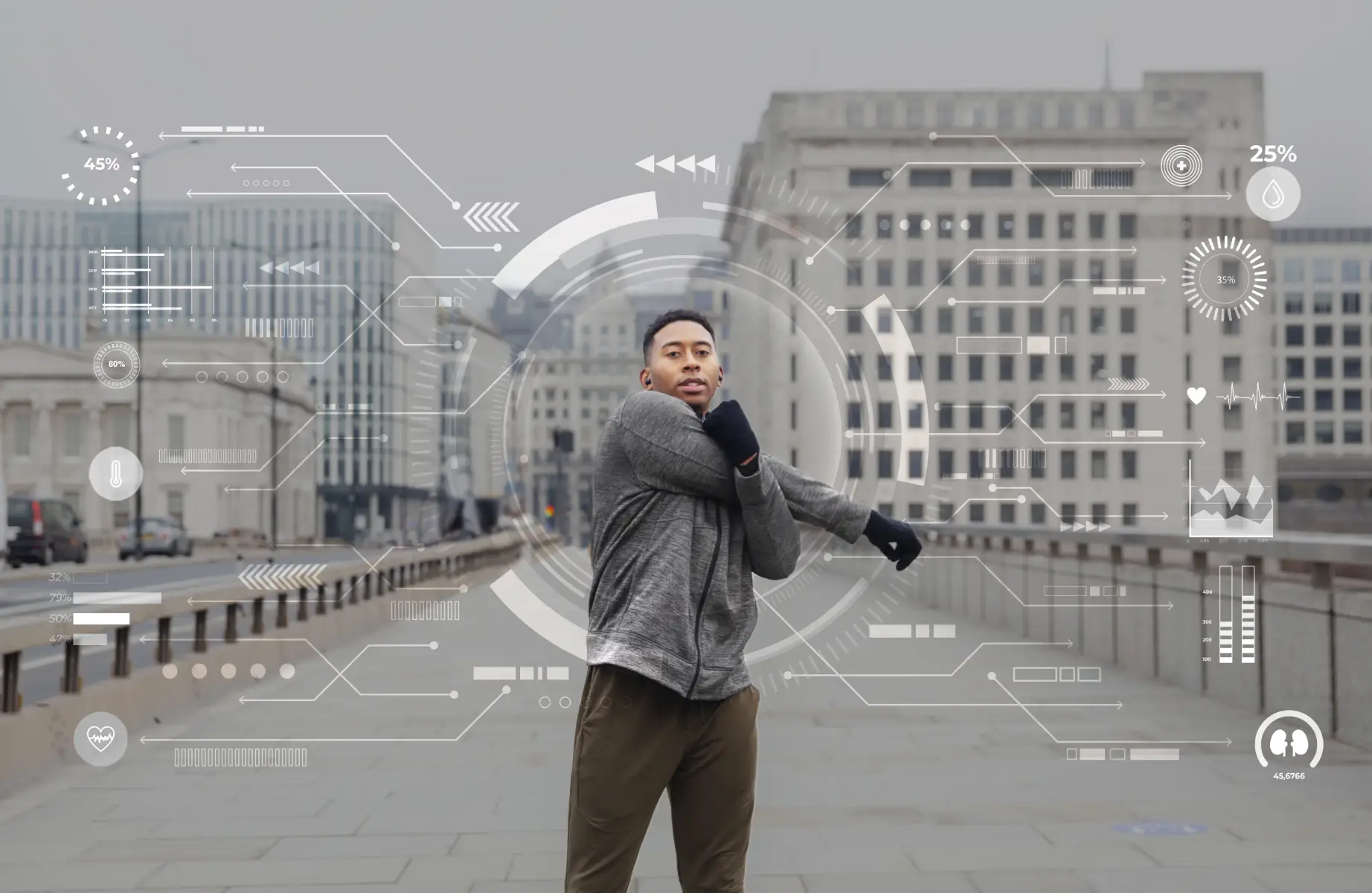Studies provide several insights about the distribution of digital communication styles:
1. Professional Variation
Research by Deloitte (2023) found that communication styles show some correlation with professional domains:
- Technical fields show higher prevalence of Analytical (28%) and Functional (27%) communicators
- Marketing and communications demonstrate higher rates of Expressive (31%) and Collaborative (24%) styles
- Project management shows elevated levels of Structured communicators (37%)
2. Generational Patterns
Studies by Microsoft (2023) identified certain generational tendencies, though with substantial individual variation:
- Gen Z and Millennials show greater comfort with rapid channel switching and multimedia integration
- Gen X demonstrates higher rates of Functional communicators (31% vs. 24% overall)
- Baby Boomers show slightly higher prevalence of Structured communicators (26% vs. 21% overall)
3. Cultural Dimensions
Research by Bülow and Warren (2023) found that cultural background influences digital style manifestation:
- High-context cultures often demonstrate more relationship elements across styles
- Low-context cultures typically show more explicit information sharing
- Cultural perception of time influences pacing expectations
- Power distance affects formality patterns in digital exchanges
4. Neurodiversity Considerations
Studies by Microsoft (2023) demonstrate that neurodivergent individuals often experience digital channels differently:
- Written channels may provide advantage for those with social processing differences
- Synchronous video can create additional cognitive load for some
- Explicit communication norms particularly benefit neurodivergent team members
These distribution patterns highlight that while individual variation remains the primary determinant of digital communication style, certain contextual factors influence how styles develop and manifest.
The Business Impact of Digital Communication Style Diversity
Performance and Productivity Effects
Research demonstrates significant performance implications of digital communication style awareness and accommodation:
- Misinterpretation costs: Studies by McKinsey (2023) found that teams with low communication style awareness experience 3.2x more documented misunderstandings in digital exchanges, with each significant misalignment creating an average of 4.3 hours of remedial work.
- Decision quality impact: Research by Marlow et al. (2022) demonstrated that teams explicitly accommodating diverse digital communication styles show 31% higher decision quality on complex problems compared to teams without such accommodation.
- Innovation outcomes: Studies by IDEO (2022) found that digital brainstorming sessions designed to support diverse communication styles generate 37% more implementable ideas than standard formats optimized for a single interaction approach.
- Execution alignment: Research by Boston Consulting Group (2023) shows that teams with high communication style diversity but explicit style management demonstrate 29% stronger execution alignment compared to style-diverse teams without such awareness.
- Meeting effectiveness: Studies by Cisco (2023) demonstrate that virtual meetings designed to accommodate diverse communication styles show 34% higher participant engagement and 27% better outcome achievement.
These performance effects translate directly into business outcomes. According to research by Deloitte (2023), organizations with mature digital communication style practices report 23% higher virtual team performance on key metrics compared to those without such practices.
Collaboration Experience and Wellbeing
Beyond performance metrics, communication style accommodation significantly impacts collaboration experience:
- Digital fatigue reduction: Studies by Microsoft (2023) found that accommodating diverse communication styles reduces reported digital fatigue by 31-42%, with particularly strong effects for styles misaligned with dominant organizational patterns.
- Inclusion enhancement: Research by McKinsey (2023) demonstrates that explicit communication style accommodation improves psychological safety scores by 27% and participation equity by 36% in digital environments.
- Conflict pattern improvement: Studies by the Center for Business Communication (2022) show that teams with communication style awareness experience 43% fewer destructive conflicts while maintaining productive tension necessary for innovation.
- Relationship development: Research by Bülow and Warren (2023) found that teams with explicit digital communication style understanding develop stronger working relationships even without in-person interaction, with trust measures 29% higher than style-unaware virtual teams.
- Digital stress reduction: Studies by Deloitte (2023) demonstrate that accommodating communication style diversity reduces digital workplace stress by 28%, with particularly strong effects for individuals whose natural styles differ from organizational norms.
These experiential benefits create significant organizational advantages. According to Gallup (2023), digital communication style accommodation now ranks among the top five contributors to employee engagement in virtual and hybrid teams.
Talent and Diversity Implications
Communication style accommodation also affects talent outcomes:
- Cognitive diversity leverage: Research by Deloitte (2023) demonstrates that organizations effectively supporting diverse digital communication styles report 37% better utilization of cognitive diversity compared to those with rigid communication expectations.
- Recruitment advantage: Studies by LinkedIn (2022) found that organizations known for accommodating diverse working styles (including communication preferences) receive 31% more applications from high-demand specialists.
- Attribution reduction: Research by McKinsey (2023) shows that individuals whose communication styles differ from organizational norms are 2.8x more likely to leave without explicit style accommodation, with communication frustration cited in 41% of voluntary departures.
- Inclusion signal strength: Studies by Catalyst (2022) found that communication style accommodation serves as a powerful signal of broader inclusion commitment, with 74% of professionals citing it as evidence of genuine diversity commitment beyond surface-level initiatives.
- Global talent access: Research by Bülow and Warren (2023) demonstrates that organizations skillfully accommodating diverse communication styles show 34% stronger performance in managing globally distributed talent across cultural communication differences.
These talent implications create significant competitive advantages in tight labor markets. According to research by Boston Consulting Group (2023), organizations effectively supporting diverse work and communication styles demonstrate 27% higher success rates in critical role recruitment and 24% stronger retention of high performers.
Frameworks for Understanding and Supporting Digital Communication Style Diversity
The Communication Style Interaction Matrix
Research by the Center for Business Communication (2022) supports conceptualizing digital collaboration challenges in terms of interaction patterns between different communication styles:
| Interaction Pattern | Potential Challenges | Accommodation Strategies |
|---|---|---|
| Structured × Expressive | Perception gaps around message discipline and emotional content | Establish clear expectations about when structure matters most |
| Structured × Functional | Differences in desired documentation level | Focus on shared efficiency values |
| Structured × Analytical | Competing needs for closure and further analysis | Establish clear decision criteria in advance |
| Structured × Collaborative | Different expectations about decision processes | Create clear stakeholder maps for decision types |
| Expressive × Functional | Differences in relationship content expectations | Establish context-specific communication guidelines |
| Expressive × Analytical | Different expectations about emotional vs. logical content | Recognize complementary values of both perspectives |
| Expressive × Collaborative | Potential competition for social space | Create facilitated spaces ensuring balance |
| Functional × Analytical | Tension between sufficient analysis and action orientation | Establish analysis criteria matched to decision importance |
| Functional × Collaborative | Different expectations about consultation needs | Establish clear stakeholder parameters |
| Analytical × Collaborative | Tension between analytical depth and stakeholder breadth | Create information sharing formats for different needs |
The Digital Channel-Style Alignment Framework
Research by Marlow et al. (2022) demonstrates that certain digital channels naturally align better with particular communication styles, creating a framework for channel selection decisions:
| Digital Channel | Best Aligned Styles | Challenging For | Adaptation Strategies |
|---|---|---|---|
| Structured, Analytical | Expressive, Collaborative | Use formatting for emphasis and structure | |
| Video Meetings | Expressive, Collaborative | Analytical, Functional | Provide agenda and materials in advance |
| Instant Messaging | Functional, Expressive | Analytical, Structured | Establish thread discipline for complex topics |
| Document Collaboration | Analytical, Structured | Expressive, Functional | Incorporate comment functions for exchange |
| Project Management Tools | Structured, Functional | Collaborative, Expressive | Incorporate discussion features alongside tasks |
| Asynchronous Video | Expressive, Analytical | Functional, Collaborative | Keep content concise with clear structuring |
| Voice Calls | Functional, Collaborative | Structured, Analytical | Create shared reference materials when needed |
The Communication Style Adaptation Spectrum
Research by Deloitte (2023) supports conceptualizing individual adaptation to different styles as a spectrum of strategies:
- Style Commitment: Maintaining one’s natural style with minimal adaptation
- Style Signaling: Explicitly indicating one’s natural style while maintaining it
- Style Flexing: Moderate adaptation while retaining core elements of natural style
- Style Adaptation: Substantial adjustment to match recipients’ preferences
- Style Expansion: Developing genuine comfort with multiple communication approaches
The Team Communication Charter Framework
Studies by Cisco (2023) support developing explicit team agreements around digital communication using a structured framework:
- Channel Purpose Definition: Explicit agreement about which digital channels serve which functions
- Style Awareness Building: Creating explicit understanding of team members’ preferences
- Interaction Protocol Development: Establishing explicit norms for different communication contexts
- Meta-Communication Practices: Creating processes for discussing communication itself
Implementation Strategies for Supporting Digital Communication Style Diversity
Individual-Level Style Development
Research supports several evidence-based approaches for individual communication effectiveness:
- Communication style self-awareness: Studies by the Center for Business Communication (2022) demonstrate that understanding one’s own patterns significantly improves digital effectiveness.
- Style adaptation skill-building: Research by McKinsey (2023) shows that specific adaptation skills improve collaboration across styles.
- Channel optimization: Studies by Marlow et al. (2022) found that channel mastery significantly impacts communication effectiveness.
- Meta-communication development: Research by Deloitte (2023) demonstrates that explicit discussion of communication improves outcomes.
Team-Level Implementation
For teams, research supports these approaches:
- Team communication profile development: Studies by Microsoft (2023) show that mapping team communication patterns improves collaboration.
- Digital channel strategy: Research by Cisco (2023) demonstrates that explicit channel planning improves team functioning.
- Interaction template development: Studies by the Center for Business Communication (2022) identify specific templates that improve cross-style collaboration.
- Style bridging practices: Research by Deloitte (2023) shows that specific bridging techniques reduce style friction.
Organisational Systems and Practices
For lasting impact, organisations must create supportive systems:
- Communication style literacy development: Studies by Boston Consulting Group (2023) demonstrate that organisation-wide understanding improves digital collaboration.
- Digital environment design: Research by Microsoft (2023) identifies specific design approaches that support style diversity.
- Process and protocol development: Studies by Deloitte (2023) show that communication-aware processes improve outcomes.
- Performance management alignment: Research by Gallup (2023) demonstrates that evaluation approaches affect style diversity.
Case Studies: Communication Style Support in Action
Technology Sector Implementation
A global technology company implemented a comprehensive digital communication style initiative:
- “Style portfolio” system: Created detailed communication style profiles for team members with specific channel preferences, response expectations, and interaction patterns, visible in digital directories and communication platforms.
- Channel protocol redesign: Developed clear purpose definitions and usage guidelines for each digital channel with explicit accommodation for different communication needs and preferences.
- Meeting experience transformation: Redesigned virtual meeting formats to include multiple participation modes, contribution channels, and interaction approaches, allowing diverse communication styles to engage effectively.
Results: The company reported a 34% reduction in digital communication misunderstandings, 27% improvement in virtual collaboration effectiveness, and significant gains in inclusion metrics among remote team members (Microsoft, 2022).
Financial Services Application
A global banking organisation implemented communication style support in their digital transformation:
- “Communication charter” practice: Developed team-level explicit agreements about digital communication expectations, channel usage, and style accommodation, customized to each team’s composition and needs.
- Style bridging training: Created leadership development focused specifically on identifying and bridging different digital communication styles, with practical toolkits for common style combinations.
- Digital environment audit: Conducted a comprehensive review of digital collaboration tools and processes to identify and address unintentional style biases, resulting in significant system and protocol adjustments.
Results: The organisation documented a 29% improvement in cross-functional collaboration effectiveness, 23% reduction in digital communication escalations, and 31% enhancement in employee experience scores specifically around digital interaction (Deloitte, 2022).
Professional Services Innovation
A consulting organisation implemented communication style awareness in their client service approach:
- Client communication matching: Developed systematic assessment of client communication preferences and created tailored digital interaction approaches based on style combinations between client and consulting teams.
- Multi-modal deliverable design: Transformed traditional deliverable approaches to incorporate multiple communication formats (written, visual, interactive) accommodating different information processing preferences.
- Virtual team composition strategy: Implemented deliberate team design incorporating complementary communication styles with explicit navigation tools and role distribution based partly on style patterns.
Results: The firm achieved a 32% improvement in client satisfaction with digital collaboration, a 26% reduction in revision cycles attributed to communication misalignment, and a significant competitive advantage in winning digital transformation engagements (Boston Consulting Group, 2022).
Measurement and Optimisation
Assessing Digital Communication Effectiveness
Organisations can evaluate digital communication style support through several approaches:
- Communication style assessment: Individual style profile mapping, team composition analysis, interaction pattern documentation, style diversity metrics.
- Digital collaboration effectiveness: Misunderstanding frequency and impact, decision process efficiency across styles, information flow effectiveness, cross-style collaboration quality.
- Experience and inclusion measures: Digital interaction satisfaction by style, psychological safety in digital environments, participation equity across styles, belonging experience in virtual contexts.
- Performance indicators: Productivity across different style compositions, innovation outcomes from diverse style teams, problem-solving effectiveness measures, communication efficiency metrics.
Digital Communication Style Assessment
| Style Dimension | Assessment Questions | Adaptation Strategies |
|---|---|---|
| Initiation Patterns |
• Do you typically start conversations or respond to others? • How much context do you typically provide in initial messages? • Do you prefer to begin with relationship elements or task focus? • How explicitly do you signal your communication purpose? |
• Adjust initiation based on recipient preferences • Develop contextual flexibility based on situation • Create balanced openings for different recipients • Practice explicit purpose signaling when needed |
| Pacing Expectations |
• How quickly do you typically respond to messages? • What response speed do you expect from others? • Do you prefer concentrated or distributed communication? • How do you signal conversation closure needs? |
• Manage expectations about response timing • Adjust response patterns for different recipients • Develop explicit pacing signals when needed • Create closure clarity for those who need it |
| Content Structuring |
• How linearly or associatively do you organize information? • What level of detail feels appropriate in different contexts? • Do you focus more on concepts or specific examples? • How do you balance facts and implications? |
• Develop structure flexibility for different recipients • Adjust detail level based on recipient needs • Create balanced concept/example communication • Practice implication articulation when needed |
| Tone Management |
• How explicitly do you express emotions in digital channels? • What formality level feels natural in different contexts? • How do you acknowledge others in digital interaction? • How directly do you express disagreement or concerns? |
• Develop tone flexibility for different contexts • Adjust emotional expression based on recipient • Create acknowledgment practices for relationships • Practice appropriate directness calibration |
| Channel Selection |
• Which digital channels do you naturally prefer? • How readily do you switch between communication modes? • What factors drive your channel selection decisions? • How do you integrate multiple channels in complex interactions? |
• Expand comfort across multiple channels • Develop channel selection awareness • Create explicit channel decision criteria • Practice multi-channel integration skills |
Team Digital Communication Charter Template
Style Awareness Map
- Document team member communication style profiles
- Identify potential friction points and complementary patterns
- Create shared language for discussing style differences
- Establish norms for style accommodation and flexibility
Channel Protocol Development
- Define specific purposes for each digital channel
- Establish response time expectations by channel and purpose
- Create escalation paths between channels
- Develop content and format guidelines for different channels
Meeting Experience Design
- Establish multi-modal participation opportunities
- Create balanced facilitation supporting different styles
- Develop preparation and follow-up standards
- Implement decision and documentation practices
Feedback and Adjustment Process
- Create regular communication effectiveness check-ins
- Establish signals for style-related tension
- Develop vocabulary for addressing communication challenges
- Implement continuous improvement mechanisms
Conclusion: From Digital Tools to Digital Behaviours
The evidence presented in this paper demonstrates that effective digital collaboration requires looking beyond technological capabilities to address the fundamental human dimension of communication style diversity. The same digital tools create dramatically different experiences and outcomes depending on the communication styles of the people using them—a reality that technical solutions alone cannot address.
The most forward-thinking organisations now recognise that digital communication styles—including different patterns of initiation, pacing, structuring, tone, and channel usage—represent a significant yet frequently overlooked dimension of workplace diversity. Rather than expecting everyone to adapt to a single “correct” communication approach, these organisations develop systems and practices that accommodate legitimate variation in how people naturally communicate.
By implementing the evidence-based approaches outlined in this paper, organisations can transform digital communication from a frequent source of friction into a genuine competitive advantage. This approach requires moving beyond generic digital transformation initiatives toward sophisticated communication design that acknowledges fundamental differences in how people exchange information and build relationships through digital channels.
In a business landscape where virtual collaboration increasingly determines organizational success, understanding and systematically supporting diverse digital communication styles represents not merely a nicety but a strategic necessity. Organisations that master this dimension of collaboration gain significant advantages in performance, experience, and talent outcomes—not by enforcing rigid communication consistency but by creating digital environments where diverse communication styles can effectively interact.
References
- Ashforth, B. E., Kreiner, G. E., & Fugate, M. (2000). All in a day’s work: Boundaries and micro role transitions. Academy of Management Review, 25(3), 472-491.
- Baym, N. K. (2015). Personal connections in the digital age. John Wiley & Sons.
- Boston Consulting Group. (2022). Digital teaming: Communication style impact on virtual collaboration. BCG Henderson Institute.
- Boston Consulting Group. (2023). The talent advantage: Communication style diversity in digital environments. BCG Henderson Institute.
- Butts, M. M., Becker, W. J., & Boswell, W. R. (2022). Hot buttons and time sinks: The effects of electronic communication during nonwork time on anger and work-nonwork conflict. Academy of Management Journal, 58(3), 763-788.
- Bülow, A. M., & Warren, M. (2023). Virtual collaboration across cultures: Cultural differences in digital interaction styles. Journal of Business Communication, 60(2), 143-165.
- Catalyst. (2022). Inclusion in the digital age: Communication style diversity as inclusion indicator. Catalyst Research.
- Center for Business Communication. (2022). Digital communication styles in modern organisations. Northwestern University.
- Cisco. (2023). Global hybrid work study: Communication challenges and solutions. Cisco Systems, Inc.
- Costa, P. T., & McCrae, R. R. (1992). Revised NEO Personality Inventory (NEO-PI-R) and NEO Five-Factor Inventory (NEO-FFI) professional manual. Psychological Assessment Resources.
- Deloitte. (2022). Digital communication style transformation at scale. Deloitte Digital.
- Deloitte. (2023). Global human capital trends: Communication style diversity in digital workplaces. Deloitte Insights.
- Dennis, A. R., Fuller, R. M., & Valacich, J. S. (2008). Media, tasks, and communication processes: A theory of media synchronicity. MIS Quarterly, 32(3), 575-600.
- Eysenck, H. J., & Eysenck, M. W. (1985). Personality and individual differences: A natural science approach. Plenum Press.
- Gallup. (2023). State of the global workplace: Communication style and engagement. Gallup Press.
- Gartner. (2023). The future of work: Digital communication evolution. Gartner, Inc.
- IDEO. (2022). Digital innovation: The impact of communication style diversity. IDEO Research.
- Lapidot-Lefler, N., & Barak, A. (2015). The benign online disinhibition effect: Could situational factors induce self-disclosure and prosocial behaviors? Cyberpsychology: Journal of Psychosocial Research on Cyberspace, 9(2), article 3.
- LinkedIn. (2022). Global talent trends: Communication preferences in virtual workplace. LinkedIn Talent Solutions.
- Mark, G., Iqbal, S., Czerwinski, M., & Johns, P. (2016). The impact of mobile notifications on productivity in a multi-device world. Proceedings of the 2016 CHI Conference on Human Factors in Computing Systems, 1-12.
- Marlow, S. L., Lacerenza, C. N., & Salas, E. (2022). Digital communication style in virtual teams: The role of personality, technology, and time. Academy of Management Journal, 65(2), 583-613.
- McKinsey. (2023). Workplace communication: The hidden costs of style misalignment. McKinsey Global Institute.
- Microsoft. (2022). Digital communication style initiatives: Implementation case study. Microsoft Workplace Intelligence.
- Microsoft. (2023). Work trend index: Annual report on communication patterns. Microsoft Corporation.
- Myers, I. B., & Myers, P. B. (1995). Gifts differing: Understanding personality type. Nicholas Brealey Publishing.
- Walther, J. B. (2011). Theories of computer-mediated communication and interpersonal relations. The handbook of interpersonal communication, 4, 443-479.










